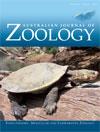Hypotheses relating to the annual frequency distribution of mammalian births are commonly tested using a goodness-of-fit procedure. Several interacting factors influence the statistical power of these tests, but no power studies have been conducted using scenarios derived from biological hypotheses. Corresponding to theories relating reproductive output to seasonal resource fluctuation, we simulated data reflecting a winter reduction in birth frequency to test the effect of four factors (sample size, maximum effect size, the temporal pattern of response and the number of categories used for analysis) on the power of three goodness-of-fit procedures – the G and Chi-square tests and Watson’s U2 test. Analyses resulting in high power all had a large maximum effect size (60%) and were associated with a sample size of 200 on most occasions. The G-test was the most powerful when data were analysed using two temporal categories (winter and other) while Watson’s U2 test achieved the highest power when 12 monthly categories were used. Overall, the power of most modelled scenarios was low. Consequently, we recommend using power analysis as a research planning tool, and have provided a spreadsheet enabling a priori power calculations for the three tests considered.
BioOne.org will be down briefly for maintenance on 12 February 2025 between 18:00-21:00 Pacific Time US. We apologize for any inconvenience.
How to translate text using browser tools
3 May 2013
Quantifying annual patterns in the frequency of mammalian births: do goodness-of-fit tests provide adequate inferences?
Evan Watkins,
Julian Di Stefano
ACCESS THE FULL ARTICLE

Australian Journal of Zoology
Vol. 60 • No. 6
May 2013
Vol. 60 • No. 6
May 2013




